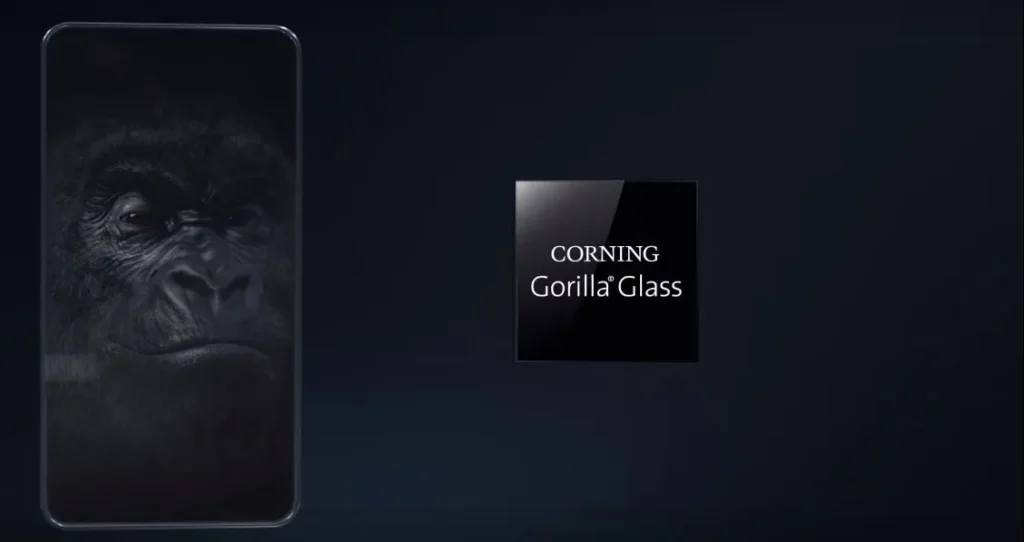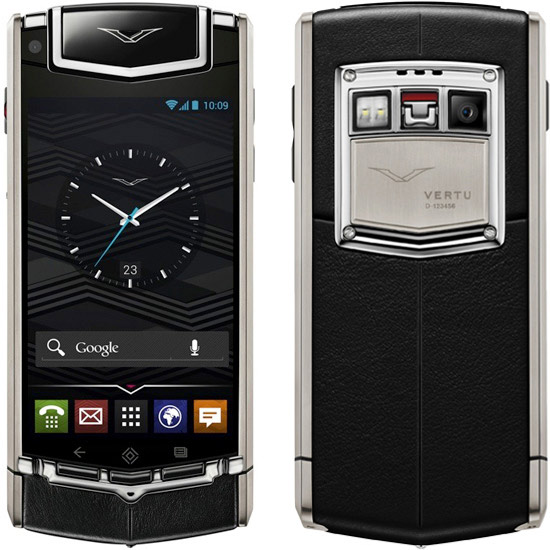Gorilla Glass: The technology behind new-generation smartphone glass has progressed along with all other growing tech. The newer your phone is, the stronger the glass on it. If you’ve ever wondered what kind of glass is used on a smartphone, read on to find out:
Table of Contents

Before buying any new phone, almost all of us usually never forget to check the display, like which version of Gorilla Glass is used. But why Gorilla Glass? Don’t we have another option?
How “Gorilla Glass” became king of display?

Gorilla Glass is the brand name for the Corning Corporation. Corning Glass Works was founded in 1851 by Amory Houghton. after more than 100 years of manufacturing of various glass products in the 1960’s, Corning developed Chemcor glass, a chemically strengthened glass that was intended to be used in phone booths, prison windows, eyeglasses and automobile windshields. Chemcor was strengthened chemically through a process called ion exchange, which allows smaller ions from the glass to be replaced with larger ions from a chemical bath. As a result, the surface of the glass became highly compressed, and therefore less prone to the introduction of damage and the application of stresses that could lead to breakage. Chemcor was designed to be chemically strengthened, although it did not ultimately find its way into the intended applications as a fully-commercialized product line. However, decades later in 2005, Corning executives realized that there would soon be a need for a strong, durable glass that could be used on a variety of mobile electronics applications. While Chemcor was not the right product for mobile consumer electronics, it and the history of chemical strengthening offered scientists an entry-point.
The result was Gorilla Glass. Significant compositional and ion-exchange processes were invented to achieve superior product characteristics, including outstanding damage resistance and retained strength, while also optimizing the glass for production on Corning’s proprietary fusion-draw manufacturing process.
That process bore fruit just two years later, when the first generation of Gorilla Glass was released on first generation smartphones. That journey has continued. Today Gorilla Glass has served 8 billion mobile devices around the world. It’s the result of decades of work researching ways to strengthen glass and a belief that core research is worthwhile.
How the iPhone Sparked Gorilla Glass
| The real turning point for Corning was indeed when Apple approached them to develop a display screen for its upcoming iPhone in 2005-2006. Steve Jobs was behind this world-changing idea. He approached the executives at Corning with a need for miles of durable glass for his new Apple product, the iPhone which launched in 2007. After the huge success gained many smartphone manufacturers rapidly adopted Gorilla Glass. Corning dusted off their old product they created in the 1960s called Chemcor, and the rest is history. Today Gorilla Glass is the best option almost for every manufacturer for a budget phone. |
Latest version by Corning
latest version of Gorilla Glass “Victus 2” was introduced on November 30, 2022. Gorilla Glass Victus 2 was first used on the Samsung Galaxy S23 series in 2023.
https://www.cnet.com/tech/mobile/gorilla-glass-victus-future-smartphones-all-in-the-glass/
Sapphire – second hardest mineral on earth

Sapphire is the second hardest mineral on earth, right behind diamond, so it makes sense that someone would develop it for use on smartphones. One of the luxury phone in the world that uses a sapphire screen, the Vertu Ti. The Vertu Ti is an Android mobile phone made by Vertu in England. The technology of Sapphire is still being under developed, but it’s in the works. Later of Vertu, Kyocera Brigadier used a full Sapphire display. Sapphire is almost completely scratch proof, which gives it an advantage over Gorilla Glass. Every time that a Gorilla Glass surface is scratched, it’s weakened. As the scratches build up, the screen becomes weaker. Others manufacturers also interested to try Sapphire but the result of the production won’t seems to be pocket friendly for consumer.

While Gorilla Glass is extremely common, its’s not the only option. Some manufacturers & regions prefer alternatives like Xensation- from Schott(Germany) & Dragontrail from Asahi glass (Japan). With continuous R&D are going on in this display technology, hope we may see more consumer pocket-friendly options in future.
Check out the other post from us
https://infonextgen.com/holographicimage-use-and-future-of-hologram-real/
Is Gorilla Glass Unbreakable?
No.
Does Gorilla Glass 5 scratch?
Yes.

[…] Why always only “Gorilla Glass” for Phone’s Display? […]